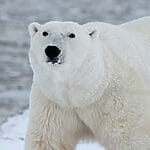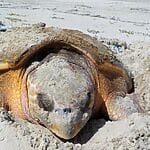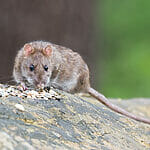Echolocation is a process used by many different animals to help them hunt, communicate, and navigate.
Various animals such as bats, dolphins, and shrews use echolocation in their daily lives but what is echolocation? How does it benefit these animals and which other animals use it?

In this article, we will take a closer look at the animals that use echolocation. We’ve included some animals that famously use echolocation but also some lesser-known animals as well.
What is Echolocation?
Before we look at some of the animals that use echolocation, let’s confirm what echolocation is.
Echolocation is a process used by several different animals to locate objects and find their way by using sound waves.
These animals emit sound waves into the air around them and these sound waves bounce off any objects or barriers they find.
The returning sound waves are then received by the animal and can be used to determine various details, such as the size, location, and texture of the world around them.
Why Is Echolocation Beneficial For Animals?
You might be wondering why some animals have evolved to use echolocation when they could instead, use reflected light waves and their eyes.
Many animals are nocturnal and operate in almost, if not complete, darkness. Echolocation is as effective in darkness as it is in light, so it is of great benefit to animals that live in darkness.
This is also the reason why several deep sea creatures use echolocation as light cannot penetrate the depths of the ocean that is their habitat.
Other animals use echolocation to help them hunt prey or avoid predators themselves. Some animals also use echolocation to communicate with each other.
Animals That Use Echolocation
Now that we know what echolocation is and how it can be used by animals, let’s take a closer look at some of the animals that use echolocation.
Bats
Bats are probably the most famous animals that use echolocation. Over 90 percent of the identified bat species are thought to use echolocation in their lives.
Bats produce sound waves by chirping and calling in frequencies that are in higher ranges than human ears can hear.
The chirps are emitted at several different frequency patterns and they bounce off any objects or barriers in the area.
These flying mammals are also famous for their large ears and these ears are designed to recognize their chirps and how they bounce back.
Bats have relatively small eyes and are nocturnal animals that thrive in the darkness, so they need to use echolocation in order to navigate and hunt.
Some bats do have very good eyesight but even these bats still use echolocation.
Bats in the suborder Microchiroptera primarily use echolocation for hunting, whereas other species in the Megachiroptera order primarily use it for navigation.
Dolphins
Dolphins are also very well-known for their echolocation. These aquatic mammals use high-pitched chittering calls to communicate with each other but they can use these in different pitches for echolocation as well.
For example, many dolphins such as the bottlenose dolphin use these calls to keep track of their young.
Mothers will teach their newborns a specific call so that if they’re separated from each other, they can use the sounds to find each other again.
Calls and chitters at lower frequencies are used for communication whereas higher-pitched ones are used for echolocation.
Dolphins do not have the best vision and can only see around 150 feet in front of them.
Echolocation helps them to navigate and ‘see’ further distances and they have specific areas in their foreheads and jawbones that aid them in recognizing soundwaves from up to half a mile away.
Whales

There are several aquatic animals that use echolocation because water is the perfect medium for it. Water is denser than air and also more efficient at transmitting sound waves, so it is ideal for echolocation.
Whales are yet another species of aquatic animals that use echolocation. Not all whales use echolocation as scientists have yet to find any evidence that baleen whales have the ability to echolocate.
Baleen whales are a group of whales that filter water and catch prey with the help of baleen plates in their mouths and it includes species such as blue whales and humpbacks.
Other types of whales, however, do use echolocation to great effect. Sperm whales emit clicks as they dive in order to help them locate food.
Toothed whales use high-pitched whistles and clicks to both hunt and navigate. Many toothed whales can dive to great depths of the ocean and without echolocation, they would be practically blind due to the lack of light in the ocean depths.
Swiftlets
These small birds can be found throughout Southeastern Asia and live in caves.
They live in flocks that can be as large as up to one million birds! They’re also one of only two types of birds that are known to use echolocation, making them pretty rare and unique.
Several species of swiftlets use a series of clicks that are similar to those emitted by whales and dolphins.
These clicks are within the range of human hearing and swiftlets use them to help navigate their way through the dark caves they call home.
With little light in the caves, echolocation is vitally important as it prevents them from flying into obstacles and walls.
Oilbirds
We said in the previous section that only two types of birds use echolocation, so after introducing the first it’s only right that we introduce the second. Oilbirds are nocturnal creatures that are found in South America.
Like swiftlets, they also live in caves and live in large flocks. Oilbird flocks can number up to several thousand and these birds often travel great distances during the night to find food.
Oilbirds can use clicks for their echolocation but they also have a very unique sound as well.
This can sound like a human wailing and is very strange to hear at first! Oilbirds use their echolocation to find their way through the dark caves in the same manner that swiftlets do.
Shrews
These small mammals have been found by scientists to use echolocation to navigate their surroundings. They’re also the first animals in this list that live on the ground, instead of in the ocean or primarily in the air.
Several species of shrews have been found to use echolocation, including the short-tailed shrew, the common shrew, and the wandering shrew.
These shrews use high-pitched squeaks to echolocate and find obstacles in their habitats and while they are underground.
Shrews may look like rodents but they are mammals that are more closely related to moles. They’re one of the few venomous mammals in the world and their eyes are small and weak.
It’s thought that shrews developed echolocation to make up for the weakness of their eyes.
Dormice
These small rodents use a series of high-pitched squeaks to echolocate and find their way around. Pygmy dormice are practically blind and echolocation allows them to navigate around their habitat.
This is especially impressive for pygmy dormice as their habitat sees them running around trees and branches, as well as the forest floor.
Pygmy dormice can only distinguish between light and dark with their eyes and this is of little use when they’re running around tree branches.
Instead, they have to rely on their echolocation to keep them from falling. Their squeaks are very soft and quiet and are undetectable by humans. Luckily, they’re enough for dormice to utilize to great effect.
Aye-Aye

The aye-aye is the only primate that is currently known to use echolocation. They’re native to Madagascar (Also check out Animals In Madagascar) where they live in trees and feed on grubs.
They’re nocturnal animals but they don’t use echolocation for navigational purposes. Instead, the use of echolocation by aye-ayes is rather unique.
Aye-ayes have a special middle finger on their hands that is especially long and thin. They tap on trees and listen to the echoes to find the grubs that are contained within the trees.
Once an aye-aye finds its prey, it uses its ever-growing incisors to bite a hole in the tree and then scoops out the grubs with its long middle fingers.
This form of foraging echolocation is only used by aye-ayes and one other species, which is the striped possum.
The aye-aye doesn’t emit any sounds at all as part of its echolocation and instead only uses taps against the trees to find what it needs.
Some aye-ayes can spend as much as 40 percent of their foraging time looking for food in this way.
Final Thoughts
In this article, we looked at what echolocation is and how it can benefit animals. We also looked at some of the animals that use echolocation, such as bats, dolphins, whales, and shrews.
As you can see from the list of animals in this article, there are a wide variety of animals that use echolocation to benefit their lives.
We hope that the information in this article will help you learn more about the amazing process of echolocation!









